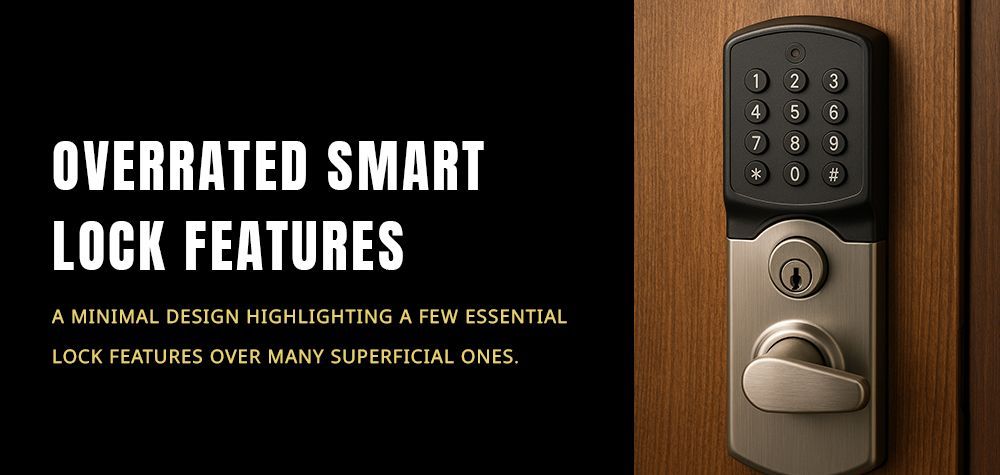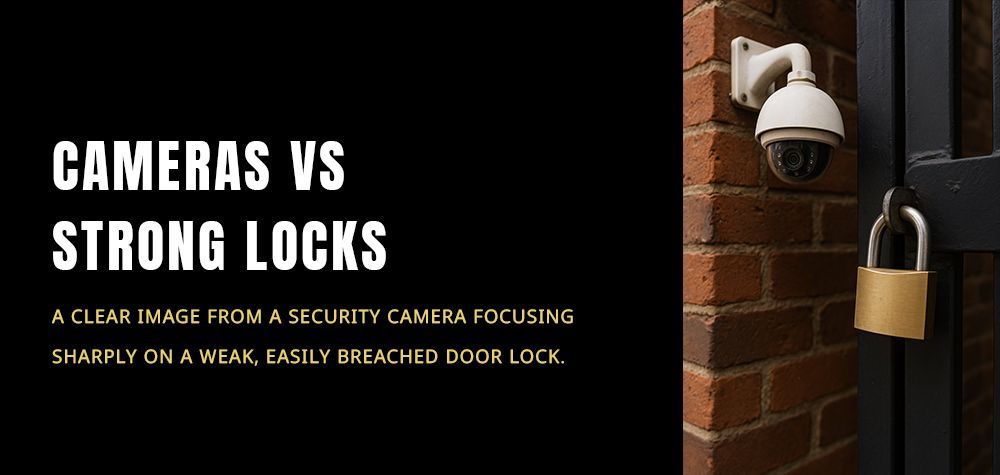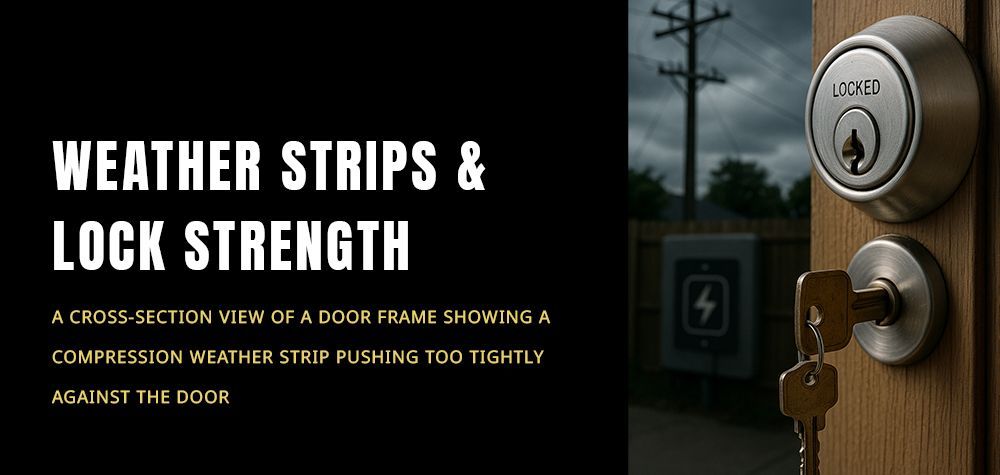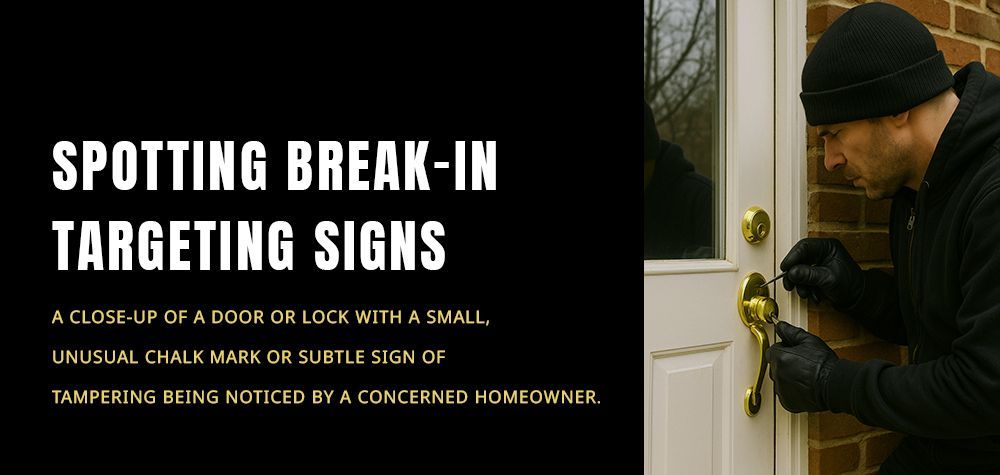How to Chain Multiple Locks for Higher Security
Adding multiple locks to a single door is about layers of protection. A single strong deadbolt is a great start, but determined intruders look for weak spots and predictable behavior. When you combine different locking mechanisms—mechanical, electronic, and physical barriers—you create more time, noise, and effort for anyone trying to break in. That delay is the real deterrent; most opportunistic thieves move on when entry requires tools, loud force, or extra time. Chaining locks thoughtfully also protects against different attack methods, from lock picking and bumping to brute force and tampering.
Can a locksmith reprogram a stolen smart lock remotely?
The Principle of Layered Security
Layered security means using locks that stop or slow different attack techniques rather than repeating the same defense. For example, pairing a pick-resistant deadbolt with a reinforced strike plate and a secondary surface-mounted lock forces an intruder to defeat mechanical resistance, then overcome physical reinforcement, and finally contend with another independently secured device. Each added layer changes the balance from a single point of failure to a system that’s resilient even if one component is compromised.
Common Lock Combinations That Work Well Together
A popular and practical combination is a high-grade deadbolt paired with a reinforced latch or rim lock. The deadbolt secures the main strike point, while the secondary lock prevents levering and provides redundancy if the deadbolt is tampered with. For sliding doors, a multi-point lock plus a keyed sliding bolt creates resistance against lifting and prying. For front doors with glass panels, combining a mortise lock with a surface-mounted auxiliary lock keeps intruders from reaching the internal mechanism through broken glass. The key is variety: mechanical deadbolts, auxiliary surface locks, and internal multi-point systems each resist different attack vectors, and together they form a more complete defense.
Placement and Spacing Considerations
Where you put each lock matters as much as which locks you choose. Place the primary deadbolt at a standard height for ergonomic use, but add the secondary device higher or lower to disrupt a rigid attack angle. On double doors, install active multipoint locks that secure the top, middle, and bottom simultaneously, and use flush bolts or shoot bolts on the inactive leaf. For side or rear doors, consider an additional lock closer to the hinge side to prevent forcible spreading of the door jamb. Proper spacing also makes it harder to access both locks with a single tool or to pry one while jamming or manipulating the other.
Materials and Reinforcement Around Locks
Locks are only as strong as the door and frame they attach to. Reinforce the strike plate with three-inch screws that penetrate deep into the stud, not just the jamb, and consider a steel reinforcement plate for high-risk doors. Reinforced strike plates, heavy-duty jamb shields, and door edge plates reduce splitting and kicking attacks. For the lock bodies themselves, choose hardened steel or alloy locks rated for exterior use; avoid cheap zinc cast hardware that can shatter under force. Where possible, upgrade the door to solid-core wood or metal; no amount of locking hardware can fully secure a hollow-core door.
Balancing Convenience and Security
One reason people avoid multiple locks is inconvenience. Multiple keyed locks create key management problems, and too many manual steps can lead homeowners to leave a weaker lock engaged habitually. Hybrid systems help: combine a primary mechanical deadbolt with an electronic secondary lock that grants temporary access codes or auto-locks on exit. Another approach is to standardize on a single keyway across several locks but control duplication through restricted key systems; that keeps convenience while limiting unauthorized copies. Consider who needs access and how often, and design the system so legitimate users are not frustrated into bypassing security.
Egress, Safety, and Legal Considerations
Additional locks must never impede safe exit. Fire codes and local regulations often require that occupants can leave quickly without special knowledge or tools. Surface-mounted security bolts that require keys from the inside or complex multi-step internal releases can create hazards during emergencies. If you add chained or auxiliary locks, ensure they are releasable from the inside without a key or that occupants are trained and able to unlock them instantly. Always check local building and fire codes before modifying doors or adding devices.
Integrating Smart and Mechanical Systems
Combining smart locks with traditional hardware gives you flexibility and monitoring ability. A smart lock can be the everyday interface—auto-unlock when you arrive, temporary codes for guests, and activity logs—while a high-security mechanical deadbolt remains the immutable physical barrier. If you deploy multiple electronic devices, segment them across networks to reduce single-point failure: keep critical access devices on a secure local hub while using battery-backed systems that retain functionality during outages.
Installation Best Practices
Precision matters during installation. A misaligned deadbolt or a slightly warped door undermines even the highest-rated lock. Use long mounting screws, center the strike plate on solid framing, and ensure the bolt fully extends into the cavity without rubbing. If installing multiple devices, check that strike plates and latch edges do not interfere with each other. Cutting corners on installation increases maintenance calls and negates the time and expense of upgrading hardware.
How to audit your home’s lock system for weak points
Testing Your Multi-Lock System
After installation, test repeatedly under different conditions: different users, varying weather, and after repeated cycles of locking and unlocking. Try to simulate emergency exit and entry to ensure the locks work independently and together. Verify that auto-lock features in electronics do not conflict with mechanical devices, and confirm that backup mechanical keys or manual overrides function as intended.
Maintenance and Longevity
Multiple locks mean more points to maintain. Schedule seasonal checks for alignment, lubrication with appropriate non-gumming lubricants, battery replacement for electronics, and tightening of screws. Corrosion prevention is essential in coastal or humid climates, so choose corrosion-resistant materials and inspect for rust. Regular maintenance keeps the system reliable and prevents single-component failure from cascading into a full system breakdown.
When to Call a Professional
Designing and installing a chained lock system is often best left to professionals. A qualified locksmith will assess door construction, recommend compatible hardware, and install reinforcement so that the locks perform as intended. Professionals also ensure code compliance for egress and can offer master-keying or restricted keyways to reduce key management risks. If you are upgrading multiple doors or a commercial property, a locksmith can propose a coherent plan that balances security, convenience, and cost.
Cost, Value, and Return on Security Investment
Adding locks and upgrading reinforcement costs more up front, but the return is measurable in reduced theft risk, lower insurance premiums in some cases, and heightened peace of mind. Choose upgrades that give you measurable gains: a Grade 1 deadbolt and reinforced strike will outperform multiple cheap locks. Consider total system value rather than counting the number of locks; quality components and solid installation provide far better security per dollar than multiple low-grade devices.
Aesthetic and Property Value Considerations
Multiple locks need not be ugly. Many manufacturers produce coordinated hardware sets so additional devices match the door finish and styling. Thoughtful installation preserves curb appeal and can even be a selling point: prospective buyers often appreciate robust security features professionally implemented. Aesthetic choices should never compromise functional placement and reinforcement, but with modern designs you rarely have to choose style over substance
.
Final Thoughts and Practical Next Steps
Chaining multiple locks is about planning and proportionality. Multiple well-chosen, well-installed devices create meaningful barriers that deter most opportunistic theft and buy time against determined attackers. The best designs combine mechanical strength, proper reinforcement, and user-friendly operation, while respecting safety codes and habit patterns of occupants. If you are considering a layered locking strategy for your home or business, have a professional audit your doors to recommend lock types, placement, and reinforcement that fit your needs and budget.
If you want hands-on help, Brothers Locksmith offers comprehensive consultations, professional installation, and ongoing maintenance for layered lock systems. Our technicians can evaluate your doors, suggest the right combinations of locks and reinforcements, and install them to code so your property is both secure and convenient to use. Contact us for a site assessment and a tailored security plan.
Call Us Any Time!









